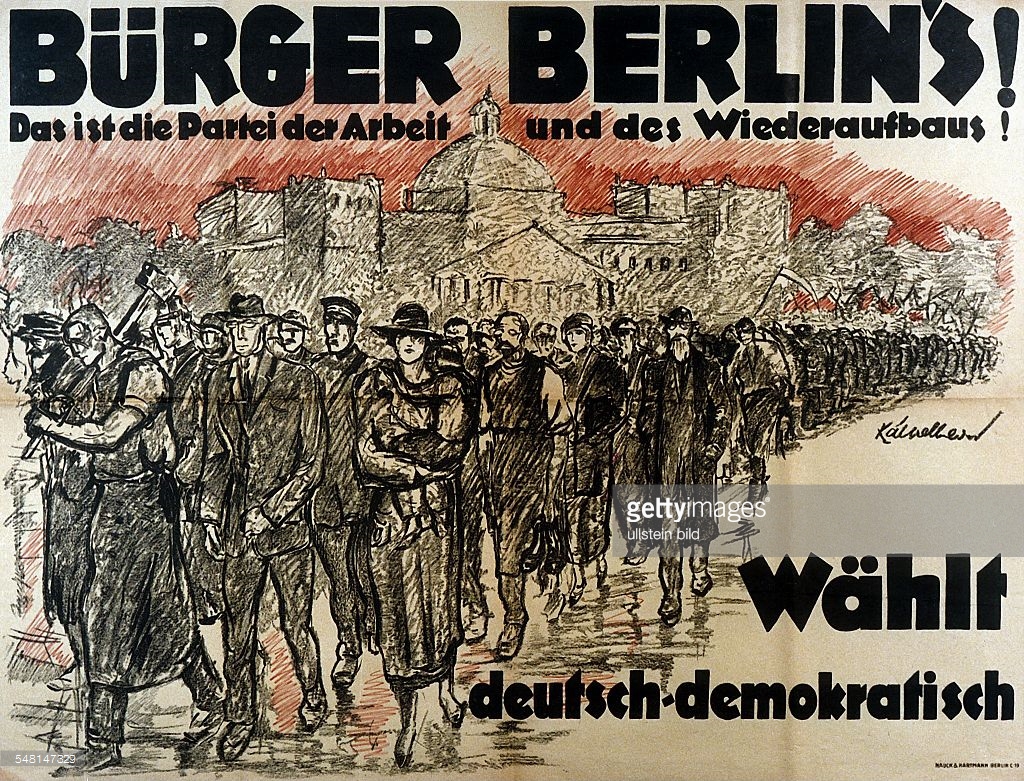The first election in Germany after the Great War was just 14 months after the signing of the Armistice. Voting method was proportional representation for the election of 421 legislators on Sunday, 19 January 1919. Proportional representation is often criticised on the basis it was the system that “elected Hitler”. Hitler was never elected in a free and democratic election. Contrary to popular opinion, neither the voting method or the Weimar Republic constitution are solely responsible for the appointment of Adolf Hitler as Chancellor of Germany.

There was universal suffrage and the voting age was 20 for the 19 January 1919 election. We take these concepts for granted but in Europe in 1919 they were avant garde. Women 20 and over could be candidates as well as vote. In Britain they could do neither. Men there had the vote at 21 but women had to be 25.
Critics say proportional representation produced Hitler. It did – to a point. The National Socialist Workers Party’s electoral success during the Weimar Republic peaked at 230 of the 608 seats – 38 percent – in the election of 31 July 1932. Hitler’s claim to the chancellorship was on the back of his party’s electoral success, which was on the wane when he was appointed on 30 January 1933. His party won 196 of the 584 seats – 33 percent – at the 6 November election.
It is true the Nazi party would not have achieved the success it did if the voting method was first past the post. But the electoral system was not the only reason for Hitler’s appointment. Throughout 1932 the Nazis succeeded in virtually paralysing government in Germany by refusing to co-operate with the other political parties. If those parties had united in their opposition to the fascists that paralysis would’ve been ended. The other parties’ failure enabled unelected players to install the former Austrian corporal as Chancellor.
The Weimar Republic Constitution did not create a powerful Chancellor. Clauses 52 to 56 imposed two checks on the role’s power: the Reichstag and the President.
In the 19 January 1919 election the Social Democratic Party won 163 of the 421 seats (38 percent) with 39 percent of the vote; the Centre Party 91 seats, 19 percent, with 21 percent; the German Democratic Party, 75 seats, 19 percent with 18 percent.
Voter turnout was 83 percent. The high turnout suggests Germans wanted to exercise their democratic rights, contrary to the claims of right-wing parties at the time.